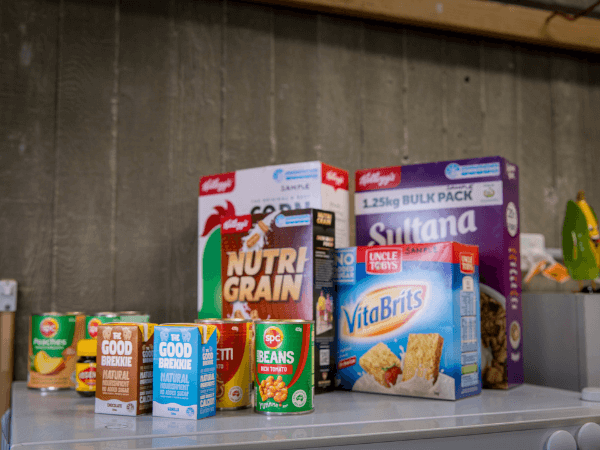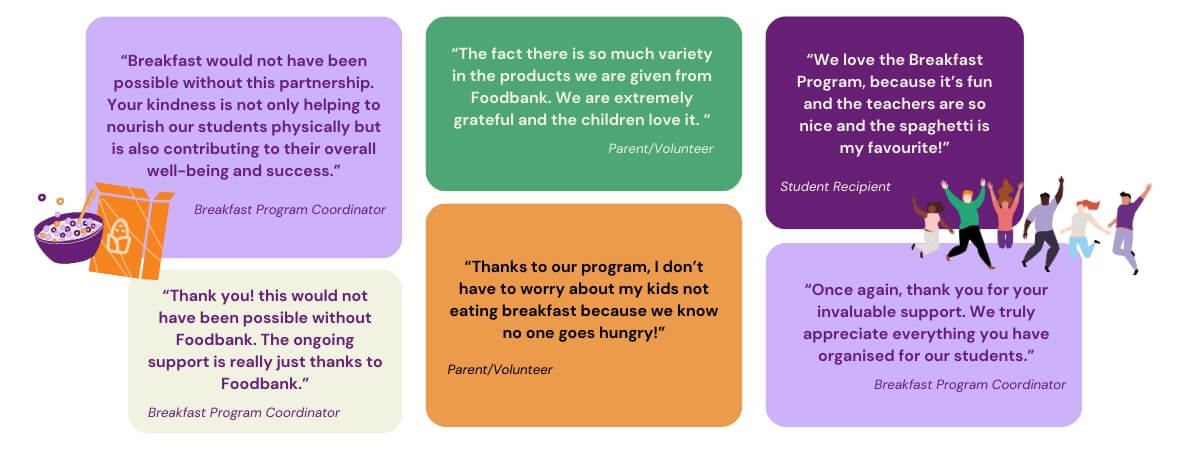How to run a successful
School Breakfast 4 Health Program
Foodbank’s School Breakfast 4 Health program offers a rewarding opportunity for your school to deliver not only a nutritious breakfast for all, but a variety of additional benefits for students, teachers, and the entire school community.
If you would like more information on the School Breakfast 4 Health Program or are ready to implement the program in your school, please contact our Impact and Engagement Team via email.
Running a School Breakfast 4 Health Program requires planning, collaboration, and commitment. Here are three key steps for a successful program:
Stay mindful of signs that students might be arriving at school hungry, such as skipping breakfast or eating their lunch for breakfast or recess. Recognising these behaviours can help you ensure support reaches those who need it most
Support from your Principal and P&C will strengthen the program’s sustainability. Once the need is confirmed, reach out to school leadership to build this support.
For a consistent and effective program, we recommend:
-
- Shared Responsibility: Engage at least two program coordinators and two daily volunteers with a backup to ensure coverage. We encourage you to get students involved to help facilitate the running of the program daily.
- Safe Storage and Preparation: Set up a designated food storage area (e.g., a lockable cupboard) and a preparation space with basic items like a fridge, microwave, reusable dishes, and a sink for washing up. Note: This must be a separate space from the canteen to avoid confusion of products
- Ordering of products: Schools can place an order once every 30 days to top up their breakfast foods. The quantity of items required per school is dependant on the number of students being catered to. Please note, that there are certain items that have limits to ensure equity among all schools.

Products Available
Schools can order a range of breakfast essentials for their breakfast program FREE OF CHARGE! Items include:
- Cereal options & liquid breakfasts
- UHT milk and soy milk
- Spreads – e.g. vegemite and jams
- Tinned and fresh fruit
- Bread
Building a Successful Breakfast Program:
- Offer breakfast at least three mornings per week.
- Make breakfast available to all students, free of charge.
- A room or sheltered area to serve breakfast.
- Basic kitchen supplies: plates, bowls, cutlery, and a sink.
- A small fridge and secure storage separate from other school food supplies.
- All schools are eligible to apply by visiting: foodbankna.org/schoolbreakfast4health
- Applications are assessed based on the needs of the school and the school’s ability and willingness to run a sustainable program throughout the school year.
 Contact us
Contact us Log in
Log in
